March 30, 2024:
Jim and I woke up the morning of March 30th fresh and rested, and ready to explore the amazing city of Tokyo. Tokyo is a city of about 14 million inhabitants (40 million when you take into account its metro area). However, it is one of the most densely populated urban areas in the world, which in part explains the ingrained politeness you experience in every encounter with a Japanese person. Because of its size, the city is spoken of in terms of its districts. Our hotel is in the Shinjuku District, near to the Tokyo Metropolitan Towers. It is predominantly a business area with private and governmental office located here, but it has its own plethora of bars, restaurants and other entertainment venues.
Jim and I have signed up for a pre-cruise exploration of Tokyo, which consists of three half day tours. Today’s is an exploration of some of the more modern parts of Tokyo, and we will drive across the city to go to an area called Odaiba Island, which is were the cruise port is located, and the giant Fuji television headquarters and towers. There is an extensive entertainment and restaurant area, as well as abundant shopping malls. We will also be going to the famous Ginza shopping area, which is where all Tokyo’s high end shops are located, and which also hosts its own restaurants and entertainment venues.
As we set off, here are some useful Japanese phrases we have learned:
Kanpai- cheers
Arigato- thank you
Domo can mean hello, thank you
Ohayo is good morning
Konichiwa means hello or welcome.
Sumimosan- excuse me; to get some one’s attention, also means I’m sorry (you drop the tone at the end; it also kind of means thank you. Add “domo” to beginning, and it is even more polite.
As we left, we passed by the “Cocoon” building,designed by Kenzō Tange of Tange Associates, who also designed many of the premier buildings in the Shinjuku district.

As is usual with these panoramic tours, our guide gave us some general information as we drove over to the Odaiba district. Almost everything in Tokyo was destroyed in the 1945 air raids. So almost everything we will see here is modern architecture. For example, Japan hosted its first Olympic Games in Tokyo in 1964, which was the same year as the bullet train (Shinkansen) debuted. In many ways, that year marked the emergence of Japan from its post-war doldrums, although by all measures, Japan staged an unprecedented renaissance during those years. During the last Olympics held in Tokyo in 2021, many of the aquatic sports were held in venues around Odaiba.
The Shibuya street crossing near to our hotel is the busiest in the world; about 3,000 people cross with each change of the light.
On the way, we saw both the Tokyo Telecom Tower, and the Tokyo Tower (modeled on the Eiffel Tower), built about 60 years ago, but naturally, it is taller (333 meters) from the bus.

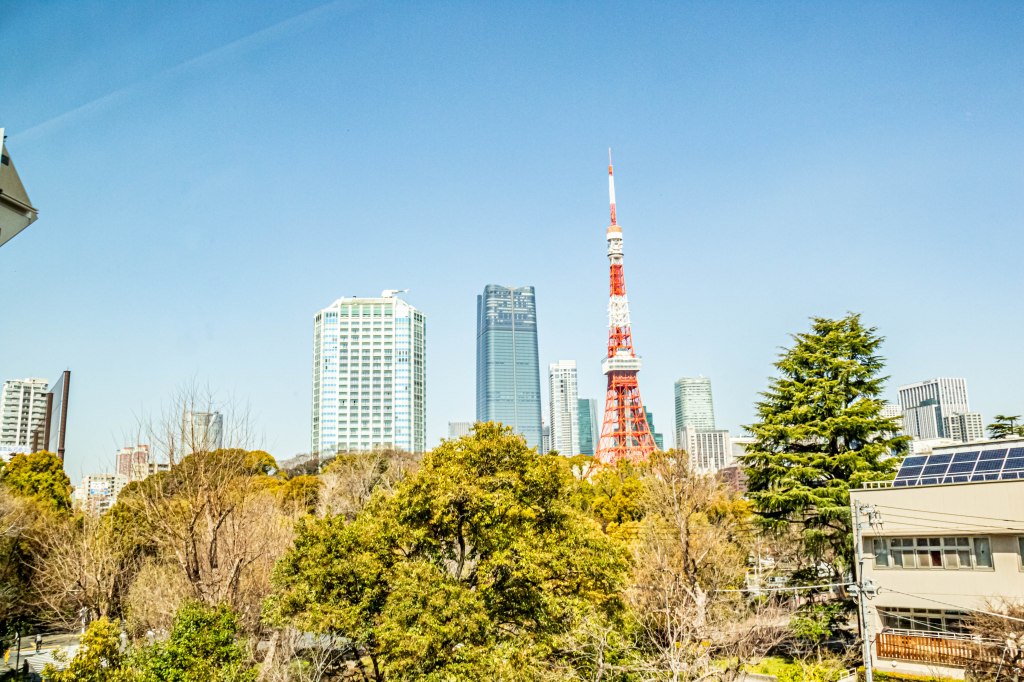
As we got to Odaiba, we noticed lots of young people walking around, which was a little strange for a Friday at 10 a.m. However, our guide explained that spring break just started, meaning that schools are out for two weeks. The school year starts in April in Japan. Students get a summer break and winter break.


Our first stop was to the man-made island of Odaiba, originally built in the 1850s for defensive purposes after American warships came into Tokyo’s harbor. Today, it is a very modern development. They even have trains to Odaiba, which have no drivers (guided by computer) which run over the Rainbow Bridge.


There are outdoor gardens; and good views of Tokyo. The seaside park has its own version of the Statue of Liberty. The plaque for the statue had this information:
“In 1876, The French government gave a special present to New York City in celebration of the centennial of the founding of the United States of America. That present is the world famous “Statue of Liberty,” which stands at the entrance to New York Harbor.
It was designed by French sculptor Frédéric Auguste Bartholdi (1834 – 1904).
In return, an organization made up of American expatriates residing in Paris gave France a “Statue of Liberty” replica, which stands in Paris, to mark the centennial of the French Revolution. The statue was officially unveiled on the Île aux Cygnes (Isle of the Swans) in the River Seine in Paris with the artist Bartholdi in attendance on November, 1889.
“To commemorate the “Year of France in Japan” (1998 – 1999), the “Statue of Liberty” installed on the Isle of the Swans was relocated to this pedestal in Odaiba Marine Park from April 1998 to January 1999.
Calls for a replica of the statue to be erected in Tokyo grew stronger as its return to France drew near. As a result, plans were drawn up to create an exact replica of the original statue, and a request was submitted to the City of Paris. In October, 2000, the exact replica was completed, and on December 22, 2000, Odaiba’s Statue of Liberty, enlightening the world in a new century, was unveiled.”





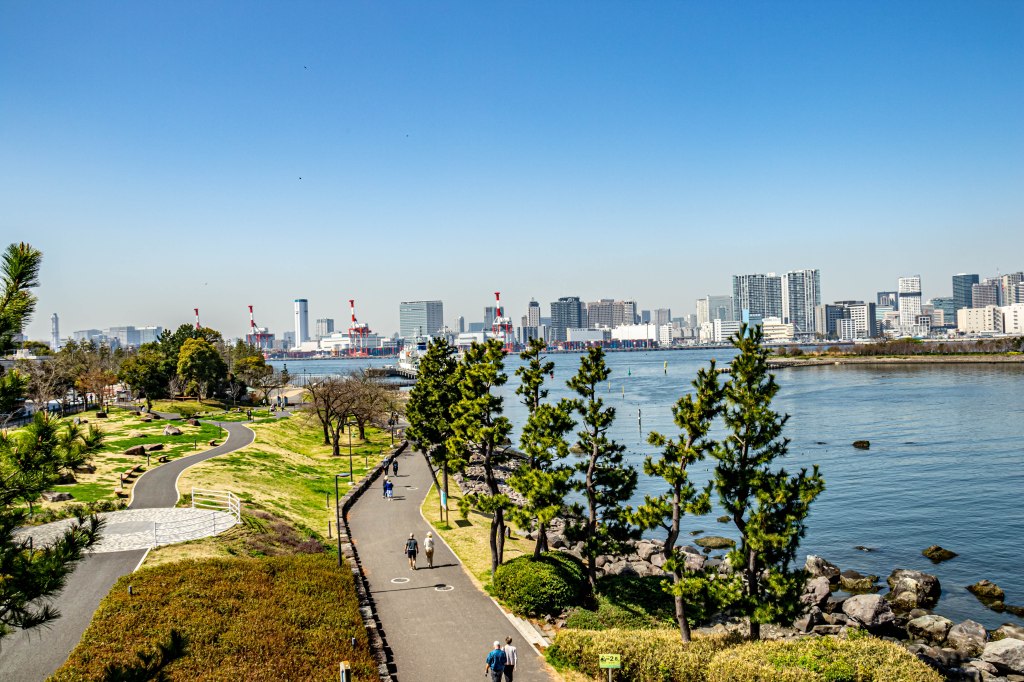
There is a huge complex next to Odaiba Island anchored by the Fuji building and TV Studios. You can take a tour to visit the studios, which we did not do, but we did use their incredibly space-age bathrooms. Unfortunately for me, I could not figure out which of the many buttons actually flushed the toilet (instead of activating the bidet, the deodorizer, or the concealing noise functions), and had to ask a young woman for help. “Head slap” moment!


On our way to Ginza, we saw elaborate new fish market (built about 4 years ago.)


After visiting Odaiba island, we went to the Ginza district. Our guide showed us one of the biggest department stores there, Mitsukoshi Ginza department store. It is the oldest in the world (about 300 years old). We went first to the food halls down on the B2 level. Everything was beautifully displayed, and many of the store fronts had Easter displays. The place was packed with shoppers, and there were numerous foreign brands displayed, especially French bakeries and choclatiers. Even though many prepared foods and meals were for sale, there was no place to eat, and no one in Japan eats or drinks on the street. When we finished with the food halls, Jim and I walked up the Main Street (called Ginza). Many foreign designers had huge stores, and there were lines in front of some to get in.










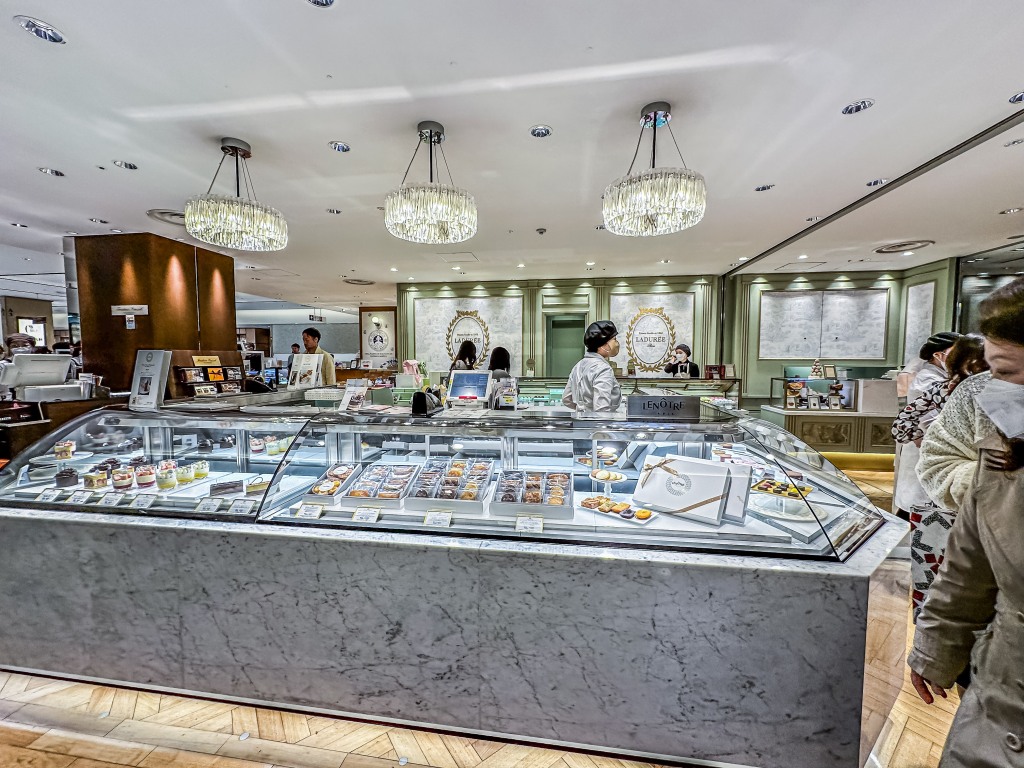
Many stores close between 1 and 3, so we returned to the department store, and rode the express elevator to the 9th floor to eat lunch. There were restaurants on 9, 10 and 11. On 8 there was an aquarium, and on 9, a museum with costumes from the Kabuki Theatre.

“Kabuki” is one of Japan’s representative traditional performing arts registered as a UNESCO “Intangible Cultural Heritage. It is a comprehensive art form that combines various distinctive elements such as unique performance techniques, makeup, elaborate costumes and stage set-tings. The actors are primarily male.

In Kabuki, efforts are made visually to make things easily understandable to the audience. For example, good and evil can be identified by the colors of the makeup, or the actor and his role can be recognized through motifs in their costumes. There are also various conventions, such as noble characters or beautiful men and women who paint their faces pure white, or young, beautiful princesses who wear red kimonos.
Kabuki not only preserves tradition but has also evolved with the times, and it has created a diverse range of plays and dances over its more than 400-year history. The main Kabuki Theatre in Tokyo is nearby, but we won’t have time to visit it (this trip). Te other main form of Japanese theater is called Noe.

I had heard the egg salad sandwiches in Tokyo were excellent, so we chose a simple cafe to try it out. On the 9th floor, we found Minori Cafe, which was very good.


Rumor had it that there are statues of Godzilla all over Tokyo. It just so happened, there was one nearby, so after lunch, Jim and I walked to find the Godzilla of Ginza.


Then, feeling adventurous, we descended into the subway to experience the busiest subway system in the world. In fact, the biggest and busiest station in the system is accessed through Station M8 located right next to our hotel in Shinjuku. To get from the Ginza subway station to Shinjuku, you take the M16 to M7 station.
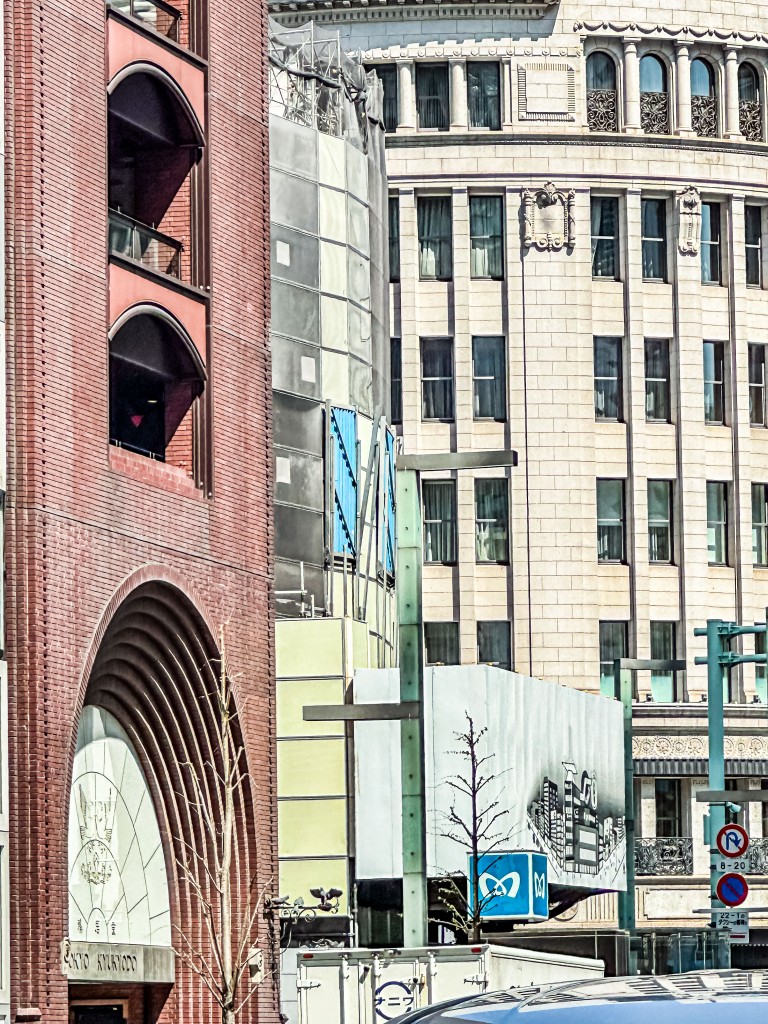
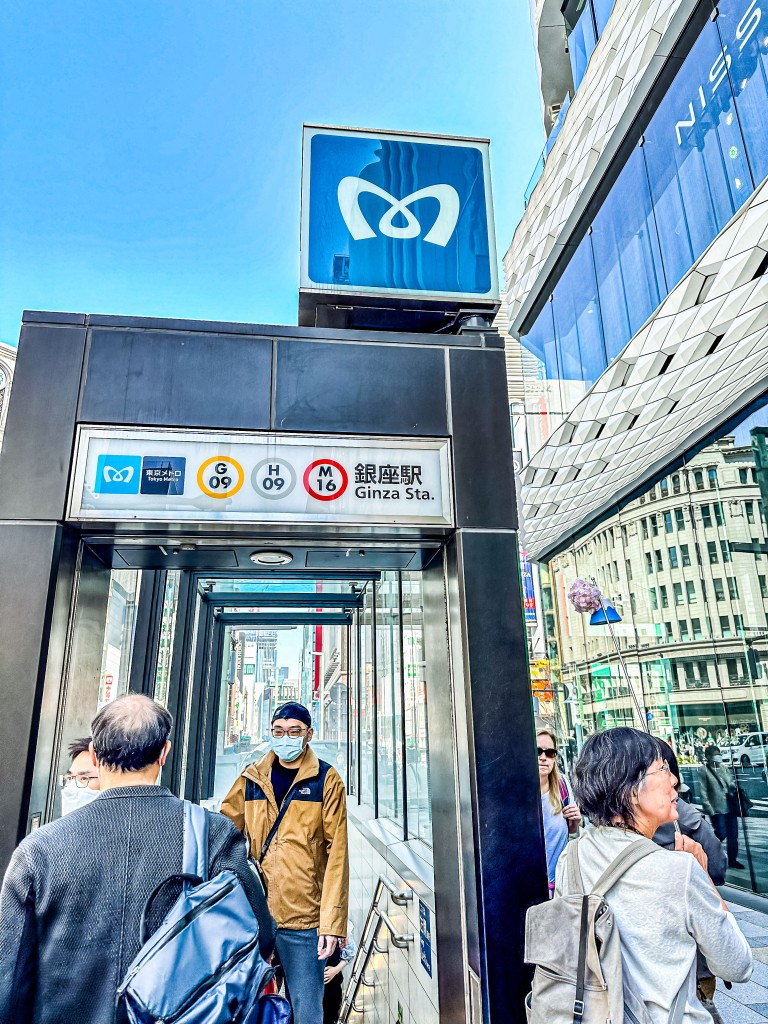

It turned out to operate pretty similarly to subway systems in the rest of the world, and we negotiated it with ease, but it also wasn’t rush hour!


With the rest of the afternoon free, we went over to the Tokyo Municipal Towers, where there is a free viewing place on the 45th Floor with 365 degree views out over Tokyo. As a bonus, the first cherry trees we saw in full blossom were right outside the municipal building!
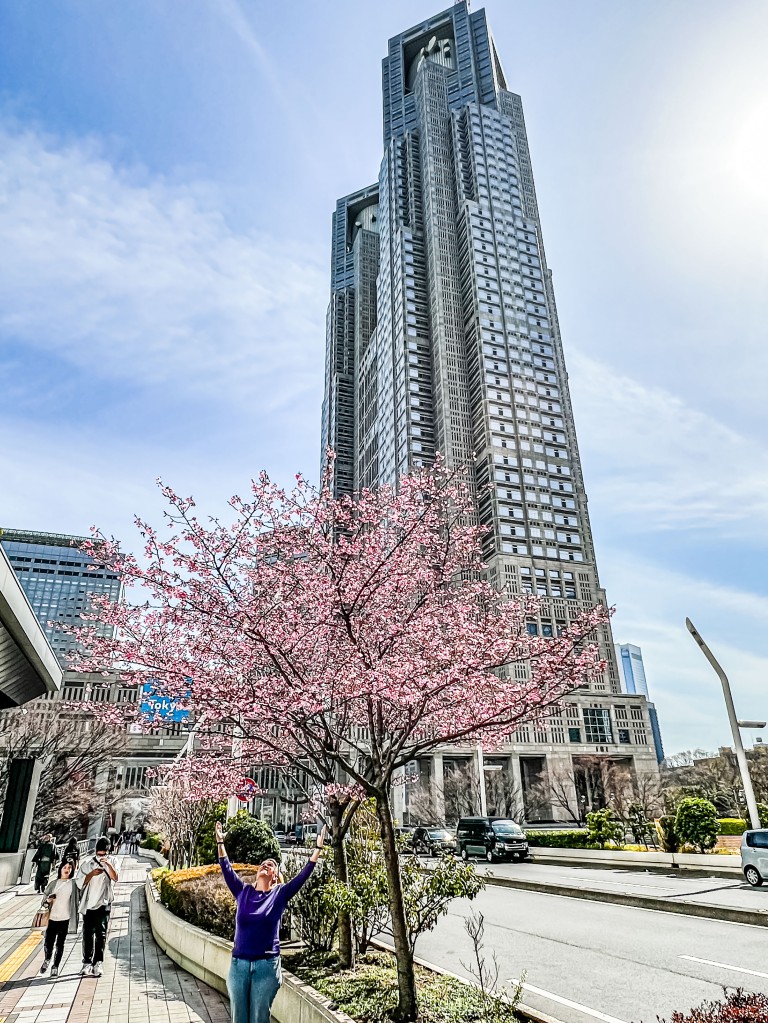
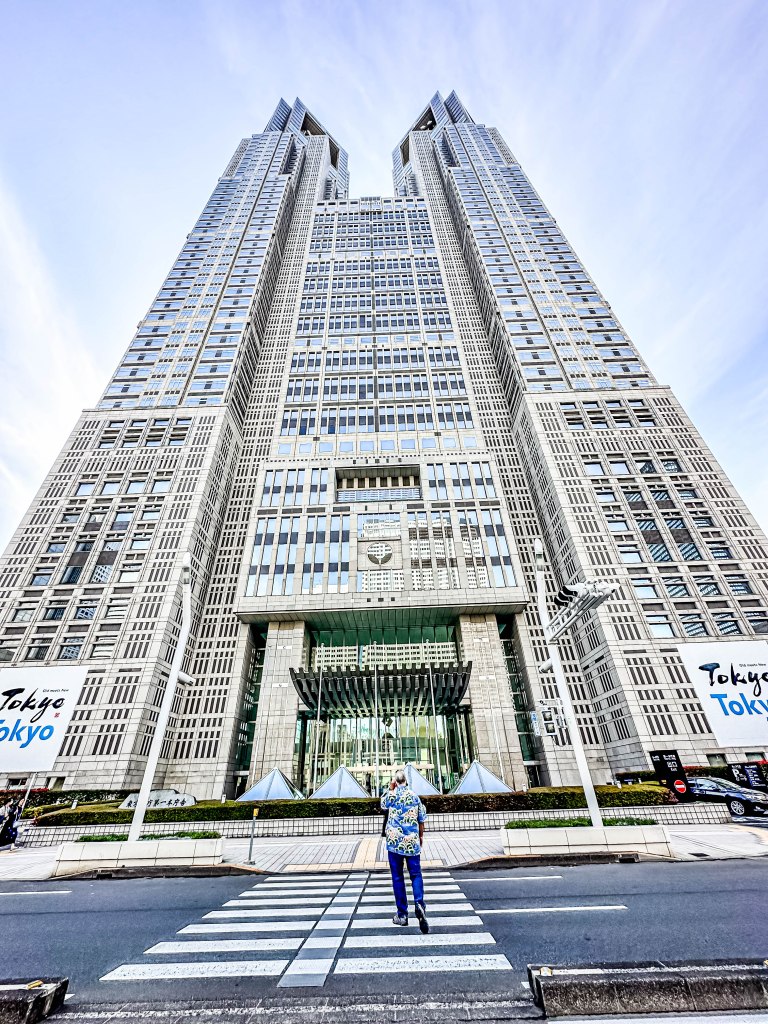
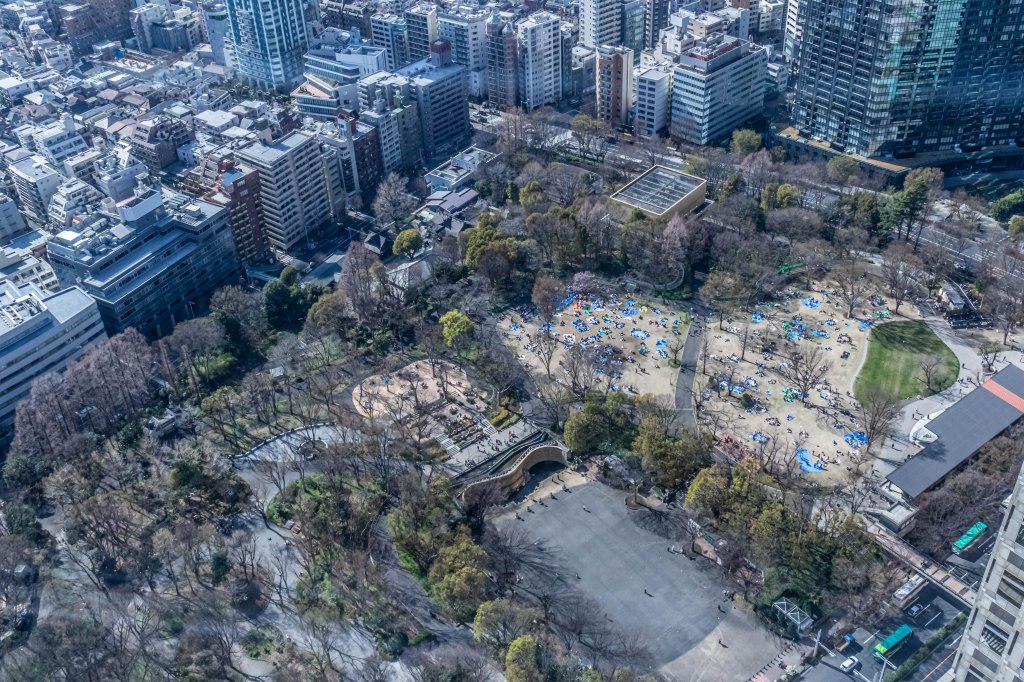
On a clear day, it is possible to see Mt. Fuji from up there. Even though it rained yesterday, it was very hazy, and we couldn’t see Mr. Fuji, but we’ll have another chance in a couple of days. We also learned that every night, there is a free light projection show on the buildings called Tokyo Night & Light, which projects on the half hour from 7 until 9:00.




Our dinner that night was a little more adventurous than the night before’s. We chose to go to a teppan grill restaurant in the Shinjuku district called Teppan Baby, figuring that it would at least be a familiar concept to us. Not quite! Jim did a great job navigating us to the place, but we finally had to ask someone which business it was. It was a subterranean place, but incredibly popular.

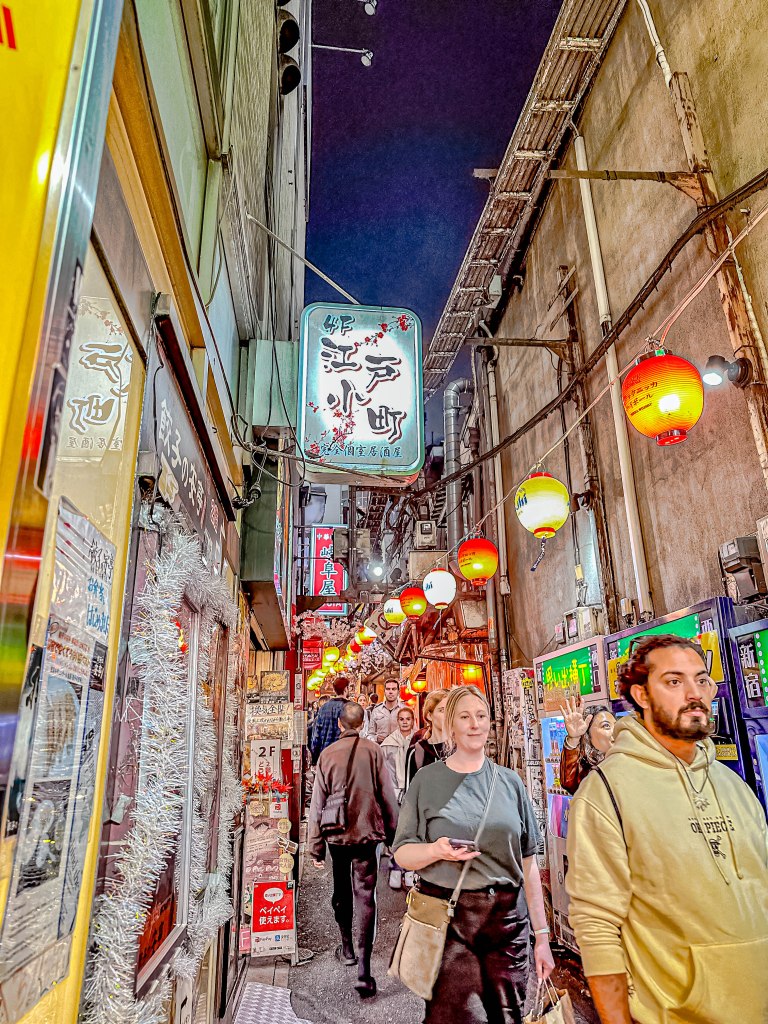


As advised, we had made a reservation on line in advance (and put our credit card down). They had reserved places for us at the grill right in front of the chefs. However, unlike yesterday, there was no English version of the menu! They had a menu with pictures, but we were largely at a loss to understand as most of the dishes looked nothing like the teppan we were used to.

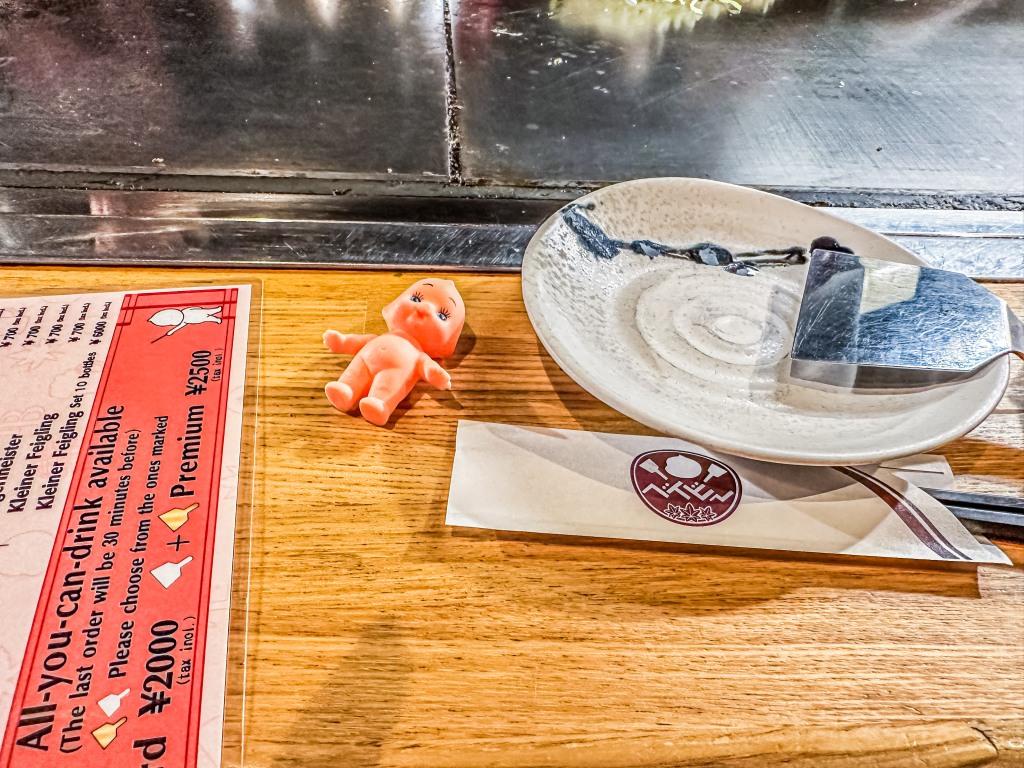

To make matters worse, we were pretty much the first customers in the place, so we couldn’t really check out what other diners were ordering. It seemed like the big seller was something called a Teppan Baby, and Jim and I just went with different versions of that. I also saw something that looked kind of like a Japanese quesadilla, so we ordered one of those too. It turned out that our teppan babies had a base layer of rice pancake, a mountain of bean sprouts, some scallions, a slice of pork, an egg pancake and topped with some kind of Japanese sauce (close to a BBQ sauce). We also found a piece of steak, and added it to our order. The restaurant was loud and vivacious, and we chatted with the couple sitting next to us. But the restaurant soon filled up, and it became obvious that this is the kind of meal you want to eat if you are planning a heavy night of drinking ahead! In fact, by the time we left, the line to get in backed up the stairs!

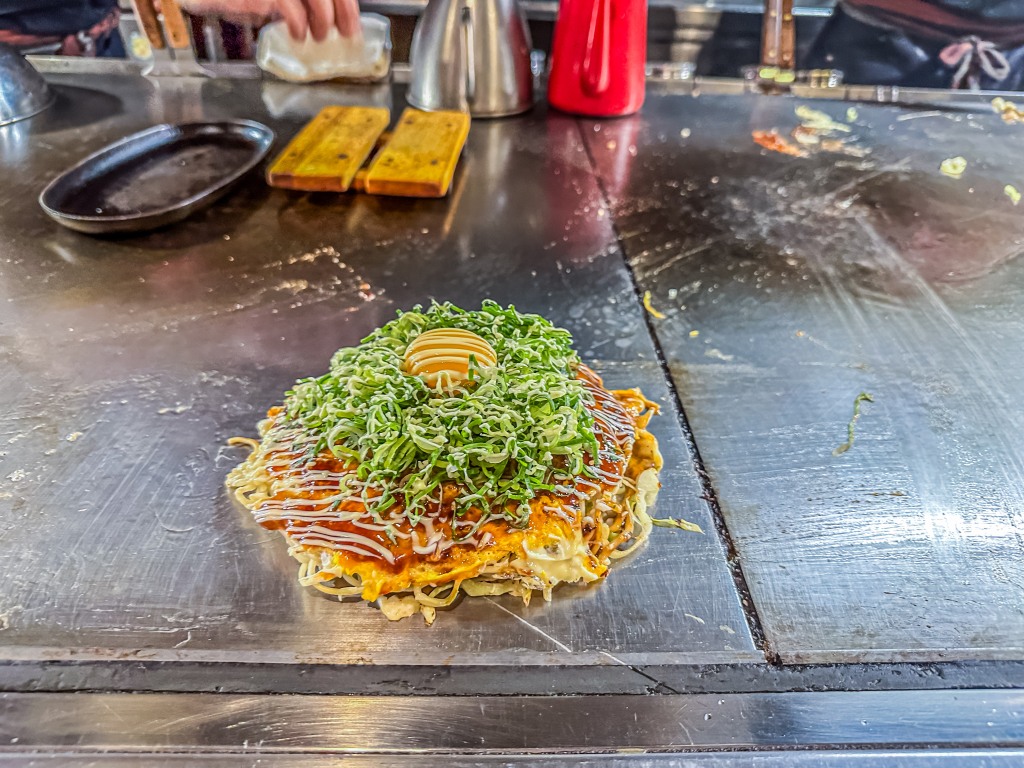



We capped off the day with a walk back through the Shinjuku district, totally crowded with people young and old out enjoying the nightlife Tokyo has to offer. We were feeling adventuresome, so we ducked down into the subway to experience station M8, and it was a sea of people (but still not rush hour).


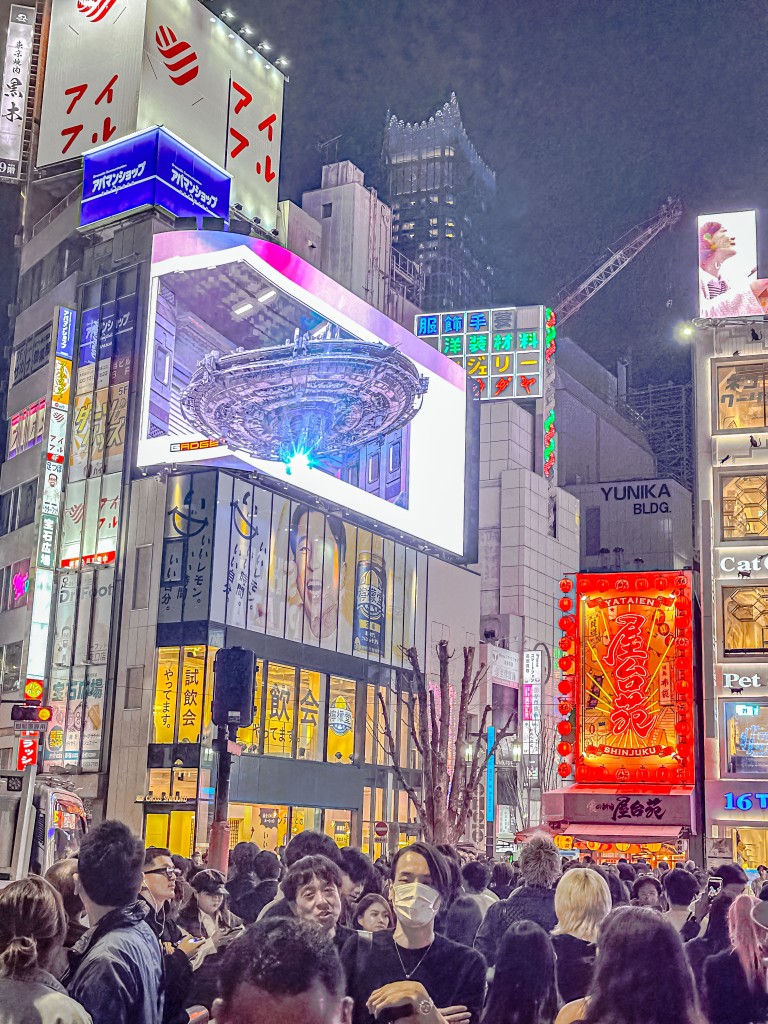

Finally, we walked over the Metropolitan Building to see the light show projections, and they were mesmerizing!
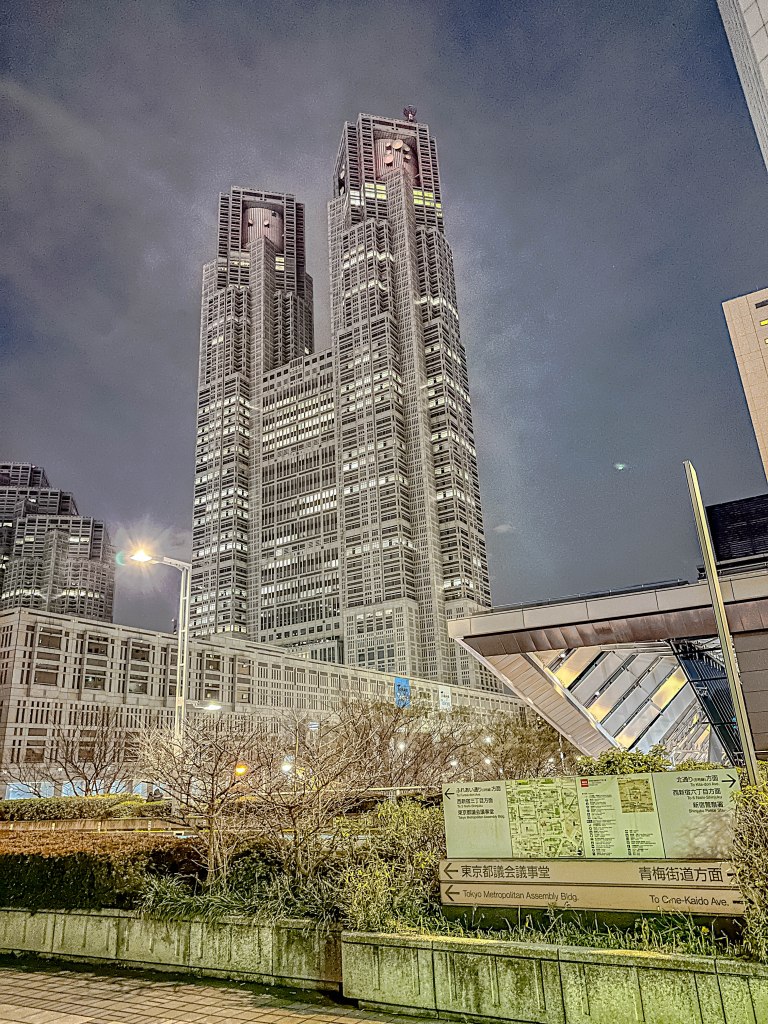





Wow! What a full day! Stick around for tomorrow’s post, as we will visit Japan’s largest cultural heritage museum, and the traditional section of Tokyo!

